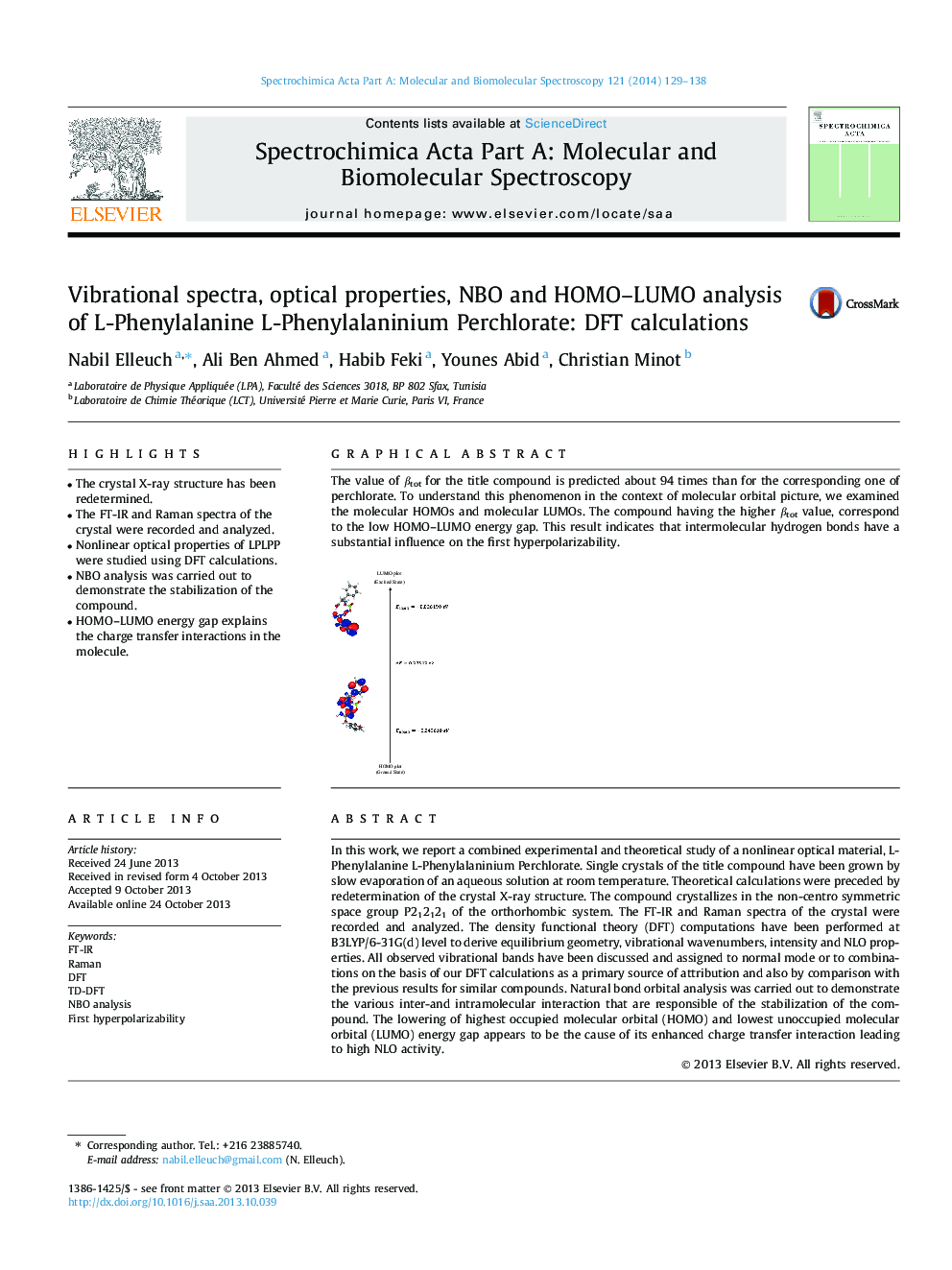| Article ID | Journal | Published Year | Pages | File Type |
|---|---|---|---|---|
| 1230455 | Spectrochimica Acta Part A: Molecular and Biomolecular Spectroscopy | 2014 | 10 Pages |
•The crystal X-ray structure has been redetermined.•The FT-IR and Raman spectra of the crystal were recorded and analyzed.•Nonlinear optical properties of LPLPP were studied using DFT calculations.•NBO analysis was carried out to demonstrate the stabilization of the compound.•HOMO–LUMO energy gap explains the charge transfer interactions in the molecule.
In this work, we report a combined experimental and theoretical study of a nonlinear optical material, L-Phenylalanine L-Phenylalaninium Perchlorate. Single crystals of the title compound have been grown by slow evaporation of an aqueous solution at room temperature. Theoretical calculations were preceded by redetermination of the crystal X-ray structure. The compound crystallizes in the non-centro symmetric space group P212121 of the orthorhombic system. The FT-IR and Raman spectra of the crystal were recorded and analyzed. The density functional theory (DFT) computations have been performed at B3LYP/6-31G(d) level to derive equilibrium geometry, vibrational wavenumbers, intensity and NLO properties. All observed vibrational bands have been discussed and assigned to normal mode or to combinations on the basis of our DFT calculations as a primary source of attribution and also by comparison with the previous results for similar compounds. Natural bond orbital analysis was carried out to demonstrate the various inter-and intramolecular interaction that are responsible of the stabilization of the compound. The lowering of highest occupied molecular orbital (HOMO) and lowest unoccupied molecular orbital (LUMO) energy gap appears to be the cause of its enhanced charge transfer interaction leading to high NLO activity.
Graphical abstractThe value of βtot for the title compound is predicted about 94 times than for the corresponding one of perchlorate. To understand this phenomenon in the context of molecular orbital picture, we examined the molecular HOMOs and molecular LUMOs. The compound having the higher βtot value, correspond to the low HOMO–LUMO energy gap. This result indicates that intermolecular hydrogen bonds have a substantial influence on the first hyperpolarizability.Figure optionsDownload full-size imageDownload as PowerPoint slide
